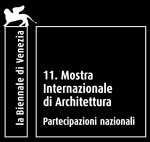“Nobody reads science-fiction here?” – FAQ 3
Posted by PeterFuchs on June 22nd, 2008, filed in faq
A discussion about Corpora and the motives behind Corpora in Si(gh)te by Ákos Maróy, software artist and Enikő Marton, Architect on some of the basic concepts of corpora. What role might this project get in the field of Contemporary Architecture, and how innovative it is?
ÁM:Does the generative method of Corpora considered to be new in the contemporary architecture?
EM: In “contemporary architecture”, it is not new at all, but let me explain this further later. In the education of contemporary architecture it is not new at all, yes. I know at least eight university all around the word, where projects very similar to this one is being developed by students – and I am also teaching something like this. The main difference is, that these students do not have the same programmer background, since the teaching of such skills does not fit into the overall education process. We do use programming in our work, still. We are writing scripts for already developed 3D software, using the algorithms, which are already implemented into these systems, and running simplified (or rather, more complex by such modifications) systems. This has the advantage, that we can choose any unit to be the basic element of the simulation, for example a line-structure, a surface, systems of surfaces, or even any compact unit can be used, depending on the particular software. Those who want to get further into the field, use parametric software’s and script them, which is considered to be more accurate mathematically, and can also be used not only by architects, but engineers to calculate load and strain – but I think these are still not included in Corpora either.
I have reviewed several similar projects, some quite alike to Corpora. For us architects, the key question is if what the analogue input is, what makes the entire system change. The big question-mark is at, where the starting point and the stopping point is – since in this case we mean works which should result in a distinct/realized building/unit. At this point we always encounter the fact that any basic, (…) system needs decisions made by a higher entity, since the “we need a scheme” effect is the starting point, and there are certain rules defined by this higher authority, like to shape of the host environment, etc. We implement the rules, and watch the system evolving, processing, growing, but at a point we will have to stop it. Where is this point? Why there, not anytime, anywhere else? These decisions must be justified quite firmly, especially if our programming skills are not adequate enough.
ÁM: Beata Oborny, biologist in her previous entry asks the question, if what can Corpora offer for the architectural discussion. She mentions the L-systems, (descriptive systems used in formal grammar and biology) from her field as an example which might be similar to this project.
The L-systems are quite handy in this case. Many tries to implement it in generative architecture. What we tech first to our students, is a simple population, made from a single cell, and starting from a two dimensional composition. Then the system can change individual/local cell’s position, rotation, location, and in the case of parametric software’s, its relative position to each other, – so the whole system changes according to the values and algorithms we assign in our set of rules.
Then we move to algorithms which react on something/responsive (this is the point where we miss the software developer background, and because of this, we rather stick to theoretical rules, derived from the original forms and cells, the limits, if present, and the basic values and equations in the algorithm – but not the real, physical input)
We can hardly have time to cover “evolving systems” in this process, and even if we do, the system can be upheld for a very brief amount of time, since it is becoming so complex, that we are having hard time to discover any architectural order in it.
ÁM: Can you briefly summarize, if why do you consider Corpora to be interesting for the contemporary architectural scene?
What makes Corpora really different from other, similar projects I know, is:
- It does not openly address the “stopping point” problem, so I can see the system running real time – we can see a constantly evolving architectural project right in front of our eyes. Yet, this issue is a bit slippery by architectural terms. As we are still obliged to use the language of statics, let me explain this: some parts of the building is already changing constantly, but until this point by “generative process” we meant the process of the actual design, which led us to a stage, which we decided to record.
- It is responsive. The element of response controls the constant evolvement – and this is what is being very expressive about Corpora
- It is being realized the Hungarian Pavilion! And this is not a joke! When I was teaching on a workshop in Hungary, I had to realize ‘our’ distance from this kind of architectural thinking. The local, Hungarian architectural scene seems to be frozen in time. The key of this problem is – at least from my point of view – that we lack an overall image on the cultural, philosophical change of the last few decades, which might help this people to understand where contemporary architecture, or even our entire word is heading. (On the first days of my workshop, I was constantly facing the question: is it possible, that nobody reads science-fiction here?). What is a even bigger problem, that young talents do see a large number of new forms, interesting structures, but not the underlying concept, motivation behind it. For them, these are only new forms, which we can model with advanced computers, now structural engineers can work with these, now we can make section plans easily, and everything can be divided into units, can be built, can be covered, etc
- It is being realized. Period.
- There is a firm programmer background behind it. That’s the point, where all the similar projects run ashore. The designers usually imagine a building which reacts on every aspect of the surrounding, and since they have a limited knowledge of programming, all of this is being simplified down to single element, which is still very interesting to study, but already lost its connection to the physical reality. This is a philosophical, architectural, ethical problem – lets highlight it with an example: The “card game” was first introduced on MIT, but included into the curriculums of design studio workshops on many other universities. Each and every student is given a deck of cards. The cards are all individually marked and are the elements of a system, yet all of them are specific – a certain set of rules are bestowed on them. But these rules have a different role than in any other card game, as it is about the possible the cards folding, incisions, and their relations to each other. Three dimensional structures should be created by folding, cutting, setting up rules of connectivity from this deck of cards – and this is for understanding the essence of all of this.








Leave a Reply
You must be logged in to post a comment.